Do you want to travel to Norway, but your budget is tight? Do you want to see the country of fjords, hike the world-famous Trolltunga, Kjerag and Preikestolen hikes without breaking the bank? Or maybe you just want to quietly sit at the edge of the world, camp near the Arctic Circle in the land of no darkness? Find out how we did it and what budget you need!
If you prefer, you can read this article in Romanian or Hungarian using the language selector on the right.
Norway has been for a long time on the top spots of my bucket list, and after weeks of planning, this summer I finally managed to get there. And what an unforgettable experience it was! After more than two weeks on the road with my girlfriend, I can safely affirm, that from the 30 countries I’ve visited, Norway is definitely in my top 3 destinations.
But Norway is notorious not just for its beautiful fjords and spectacular landscapes… it’s also one of the most expensive places on Earth. Below we give you 16 tips on how can you limit your expenses in the far north and we provide you with a detailed budget for a best-case and a worst-case scenario for a two-week trip.
Accommodation
Without a doubt, accommodation is extremely expensive in Norway, even when compared to western Europe, especially in the summer around the popular places. Don’t believe me? Just do a quick search on booking.com.
If you make a reservation well in advance or prefer something very remote, you might find good deals, but it’s still going to be expensive. I’d say around 100 Euros (90 GBP or 115 USD) per night is a good estimate for a double room if you get lucky. For last minute accommodation with a reasonable level of privacy and comfort, you can count double as much, except camping bungalows, which you could get for around 120 Euros (105 GBP or 140 USD) per night. Thus, if you don’t want your accommodation costs to skyrocket for a longer trip (and you don’t want to sleep in a car for two weeks), you have a single option.
1. Sleep in a tent
For some people this is something unimaginable, but you’re probably not one of those if you’re reading this. I actually love sleeping in a tent, feeling close to nature. I even have a perverse love of camping in huge storms… :)) (only in quality tents, mind you, like ours). Every year when spring is getting close, I’m already craving a good camping trip and I’m looking for an excuse to get my tent out in the wild.
Contrary to my initial research, camping prices in Norway were not that high compared to the rest of Europe. The most we paid for a night (for a car, a tent and two adults) was 220 NOK (around 23 Euros, 20 pounds or 27 dollars), in the southern, more touristy region, near Odda. The least was 140 NOK (15 EUR, 13 GBP or 17 USD) in several places in the north. And as a bonus, these campsites offer you amazing views usually.
2. Wild camp when possible
Luckily Norway has very permissive laws when it comes to wild camping. Which doesn’t mean you shouldn’t treat the beautiful nature it has with respect! We’ve seen some ugly things left by tourists, and of all places, Norway was the last one we expected it.
So what are you waiting for? Study the Norwegian law and find your wild camping spots, until it’s legal! It’s free!
For instance, Iceland, another Nordic country, has practically made it illegal to wild camp throughout the country. And I have a hunch, that it was at least partly because of the specimens I was talking about above.
Travel
Travel logistics is another area where things can get expensive quickly, in many ways. If you want to protect yourself from that, better read the following tips carefully.
3. Travel by car
Public transportation is not cheap in Norway. Just ask anyone who did “Norway in a nutshell”, the tour basically everyone does who arrives in Norway for just a few days. But if you only want to try a part of that, for instance the world-famous railway track between Flåm and Myrdal it will still cost you a lot. Don’t worry if you go in high season and didn’t reserve weeks in advance, it will be fully booked, so one problem less.
The best option is to go by car, for multiple reasons. It’s the most inexpensive, it’s flexible, and Norway’s infrastructure deserves a post on its own. Driving in Norway is simply charming, most of the time! Why not always? See the next tip!
4. Abide the speed limits VERY strictly
Norway has a long tradition when it comes to speed limits. It was one of the first countries in the world to set a speed limit, in 1912 (15km/h or 9 miles per hour in the city and 35km/h or 22 miles/h outside). And its fines for speeding are ABSOLUTELY crazy. Trust me, you don’t want to be fined in Norway for speeding. You could even go to jail or forced to do community work!
Now, to be fair, the speed limits make sense… most of the time. There are lots of roads where two cars just don’t fit next to each other and they have to meet at special meeting points (some of those, but not all are marked with a big “M” sign). In other places, the road is just so curvy that you simply cannot even reach the speed limit (trust me, I tried). But there are also long stretches of good quality road, where going faster would be absolutely fine in my opinion… unless a moose family decides to cross in front of you, which happens more often than you think!
5. Come with your own car if you can
If you are basically anywhere in Europe, you’re better off driving all the way to Norway with your own car, compared to flying and renting. Now, I realize, it’s going to be a freaking long way, trust me… we drove more than 8000km (5000 miles) in a little bit over two weeks. But we decided, we have more time and nerves than money, so that’s how we’re gonna roll.
6. Rent a car in Sweden or Denmark, instead of Norway
If that’s just too much for you, you could try what some friends of mine did: fly to Sweden and rent a car there. Even if Sweden’s car rental prices are not exactly a low budget option, they were still about half the price compared to Norway last time I checked. You could check out the prices in Denmark as well, it’s not that far away and generally cheaper compared to Sweden.
7. Use ferries wisely
Now when someone living in a country with little to no ferry connections hears the price of a ferry ticket, their immediate reaction is to just skip the ferry and drive around. Not so fast! If we’re talking about the big ferries that go to and from Norway, the price is roughly about the same as you would pay for fuel (and bridge crossing, see below), but you save a lot of time and nerves by taking the ferry. Inside Norway, the same is true, with the mention, that you may not even have other options at all!
Besides, traveling on a ferry is a nice experience on its own. For both of us this was the first time we traveled on one of those huge ferries, and let me tell you, I’m hard to impress after seeing so much throughout the world, but I was amazed. It’s like if the huge duty-free section of a big airport is built inside the ferry and travels with you, with shops, restaurants and entertainment zones. And as a bonus, you can go outside anytime to look at the waves of the sea (if you can take the chilly wind and the occasional rain). Don’t forget, for the big ferries you need a passport, even if you can enter the country on land or by plane with just your ID!
For the small ferries inside Norway, make sure to check the timetable in advance. We were lucky and never had to wait for more than half an hour, but be careful, as some of those ferries don’t run for hours during the night, so you could get stuck there, which is not exactly comfortable!
Also, you should know the difference between regular ferries, that just make a connection for a national road, and touristic ferries, which are way more expensive. For instance, if you are in the Preikestolen – Kjerag area, it would make sense to take the Forsand – Lysebotn ferry so you don’t have to drive around, but look at the prices compared to the regular Lauvvik – Oanes ferry!
8. Plan the big ferries ahead of time
Think of those big ferries as low-budget airline flights. Usually the earlier you book, the cheaper price you get. Because we didn’t know that, we paid a price difference of around 50 Euros (44 GBP, 58 USD) for booking one week later!
10. Skip the Øresund Bridge
While driving on the bridge connecting Denmark and Sweden between Copenhagen and Malmö seems like a good idea on paper, it really isn’t. You might save one hour or two, but you pay a big price to cross the bridge when you could take the Rostock – Trelleborg or Sassnitz – Trelleborg ferry directly, instead of the popular choice suggested by Google Maps’ route finder between Rostock and Gedser. The price is roughly the same for the two ferry routes and tip number 9 still applies!
11. Avoid the parking at the Trolltunga and Preikestolen hikes
The parking fees in these touristy places are huge. The lower parking at Trolltunga (Troll tongue) normally costs 500 NOK (52 EUR, 46 GBP, 61 USD) and the upper one (which will be full unless you come really early) 600 NOK (63 EUR, 55 GBP, 73 USD). We managed to get one cheaper, you will find out how in a later post! The Preikestolen (Pulpit rock) parking is low budget compared to these, “just” 200 NOK (21 EUR, 18 GBP, 24 USD).
You could instead leave your car next to the main road in both cases, and walk 1-2 hours more to avoid paying the parking fees.
12. Inform yourself on Norwegian toll roads
In Norway, some roads are for free, but there are some roads with a hefty toll. I didn’t mind paying 136 NOK to cross the Atlantic tunnel, or 80 NOK to drive on the scenic Tindevegen, but those could have been avoided if we really wanted to save the pennies.
13. Bring some Czech Koruna if you have to drive through the Czech Republic
We had to pay 25 Euros for the road toll instead of the 17 it should have been to exchange the 440 Korunas! Also, if you plan your trip with a city break in Prague as we did, the Korunas will come handy for metro tickets and such (it was a whole story to get cash in small enough bills to buy our tickets to go to the city center!).
14. Be mindful of where you refuel
For the portion of the journey until you reach Norway and the way back, check out online the fuel prices for every country you will cross. In our case the closer we got to Norway, the more expensive the fuel got, except Slovakia, which was more expensive than the Czech Republic. Thus the optimal method was to full tank when exiting Romania, then when exiting Hungary, then when it was getting close to empty tank in the Czech Republic, then again before leaving the country, and the same in Germany and Denmark. The way back we fueled such an amount to reach the next country safely. Now, if you take into account the quality difference of the fuel in different countries (and the difference in consumption which results), things could be optimized even more. For instance we refueled in Germany at a Shell station, and even if it was a little bit more expensive, the quality was clearly higher, making our consumption surprisingly small for driving in a no speed limit zone.
Most people know, that gas stations along highways are more expensive, so pay attention to your navigation device, and occasionally drive off from the highway for a few kilometers to refuel in the first village. You could save a few bucks this way.
In Norway we noticed, that prices are lower in the vicinity of bigger cities (such as Trondheim), compared to isolated villages, that is the exact opposite of what we saw anywhere else. Prices change quite drastically from one county to another, and even from one day to another. As in other places, the most inexpensive are self-service stations, where you pay with your card. Don’t be scared if you are charged a bigger amount, or two transactions with similar amounts, that’s just the way those stations work, and the money will be restored in a few days or weeks. This happened to us twice in Norway and once in Sweden. In general the fuel was more expensive in the south, except the Mo I Rana region, which seemed a little bit more expensive compared to more southern parts.
Food
It should be no surprise, that food is also very expensive in Norway 🙂 If you fly to Sweden, you should buy there in bulk, but the best option is:
16. Drink plain water
This should go without saying. Just buy a big box or two of plain water and keep refilling it. Water is plenty in Norway, so you don’t have to worry about this! If you are super skeptic you could bring a water filter. I am very sensitive when it comes to water and had no problems at all, I’ve used my water filter maybe twice when I didn’t like the taste of the tap water in some camping. If you are less picky when it comes to water, you don’t need a purification method.
Ok, I got it, so how much does it cost?
Best case scenario
If you have a nice big diesel car with low consumption with a big trunk, you could fit three persons in there. With all the food and tents, sleeping bags, mats and equipment for hiking we don’t think four persons in a car is feasible for this trip. And let’s say you’re not as crazy as I am and you don’t want to drive all the way up to the Arctic Circle, you just stay in the south and enjoy the fjords. Being three persons you will have enough energy to look for wild camping spots every night, so accommodation will cost you nothing in Norway. Let’s break it down:
Fuel: 6000 km, 5l/100km = 300l, which is around 500 Euros in total, or 165 Euros per person
Big ferries: two crossings, 130 Euros in total, 43 Euros per person
Small ferries: four crossings, about 17 Euros per person
Road toll Hungary (for a month): 15 Euros in total, 5 Euros per person
Road toll Slovakia (for a month): 14 Euros in total, 5 Euros per person
Roat toll Czech Republic (for a month): 17 Euros in total, 6 Euros per person
Road toll Norway: If you plan well shouldn’t be more than 15 Euros per person
Accommodation: four nights in cheap campings on the road to Norway and back, 25 Euros per person
Food for two weeks: about 70 Euros per person
Total: 350 Euros (305 GBP, 405 USD) per person
Worst case scenario
Let’s say you travel as a lone wolf with a less economic car. You drive all the 8000kms as we did and you’re just not the wild camping type, so you sleep in a camping every night and enjoy the inventions of civilization, such as showers and toilets.
Fuel: 8000 km, 8l/100km = 640l, which is around 1050 Euros
Big ferries: two crossings, 130 Euros
Small ferries: six crossings, 85 Euros
Road toll Hungary (for a month): 15 Euros
Road toll Slovakia (for a month): 14 Euros
Roat toll Czech Republic (for a month): 17 Euros
Road toll Norway: 80 Euros
Accommodation: four nights in cheap campings on the road to Norway and back, 80 Euros
Campings in Norway for 10 nights (including occasional showers): 200 Euros
Food for two weeks: about 70 Euros
Total: 1750 Euros (1530 GBP, 2030 USD)
Conclusion
As you noticed, there is a huge variance from the best to the worst case scenario, and most people will fall somewhere in between those (as we also did, including our Prague city break with regular hotel accommodations in Prague and on the road!). Also important to note, that the biggest expense in both cases is the fuel, so if you can and want, don’t go alone! It can save you a lot of cash!
As a reminder, this is a BUDGET option for Norway, where you will have to make compromises. Will it be comfortable all the time? Not really! Will it be absolutely worth it? Heck yes!
Even if it’s cold and rainy, even if you are eating the same food for days, enjoy every moment of the journey! After all, it’s going to be one of the most epic trips you will ever make, trust me!

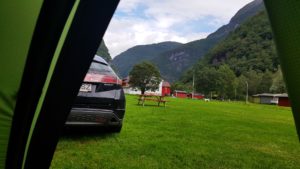
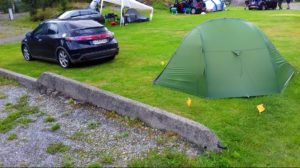
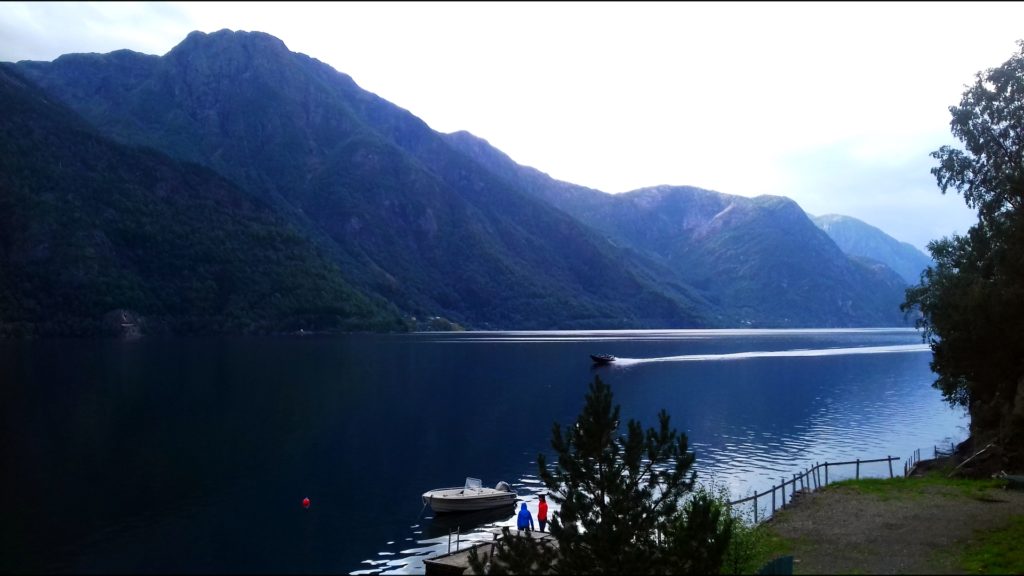
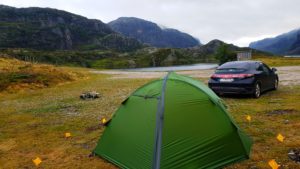
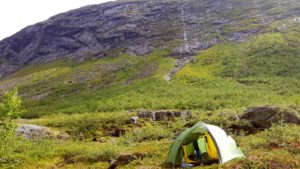
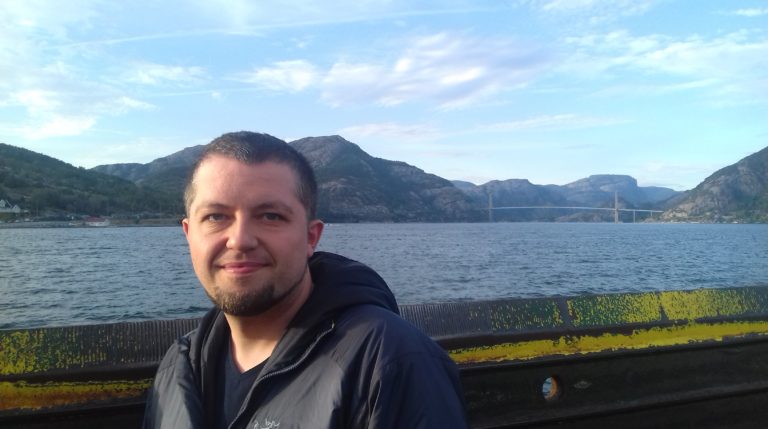
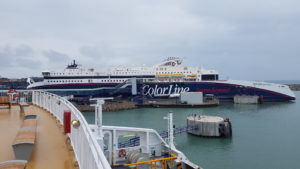
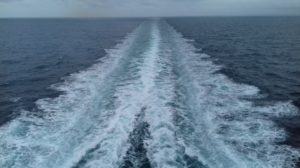
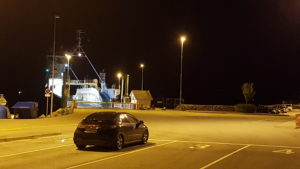
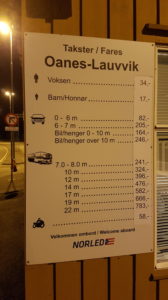
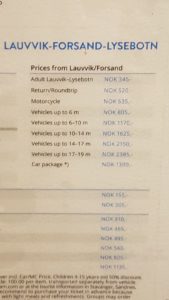
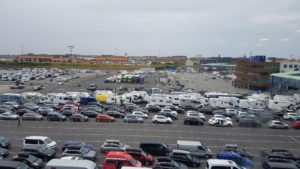
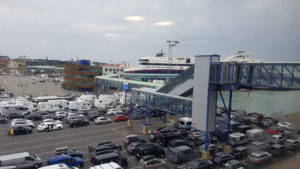


Pingback: Hiking in Transylvania vs Norway: Which one is better? - Transylvanian Hiker
Thank you providing a detailed information on travelling to Norway that in a limited and tight budget , would be of great use to those who seem to plan their trip anytime soon, would surely share these arrticle will my friends and family for their reference as well.
Hello Kanika, I’m glad you enjoyed the article. Lately, I’ve been concentrating on the YouTube channel mostly, so make sure to check that out as well. I’m planning some more content about Norway in the future, such as about our itinerary, what kind of food have we eaten and about the amazing roads of Norway. And of course about our hikes there! There’s a lot to cover!